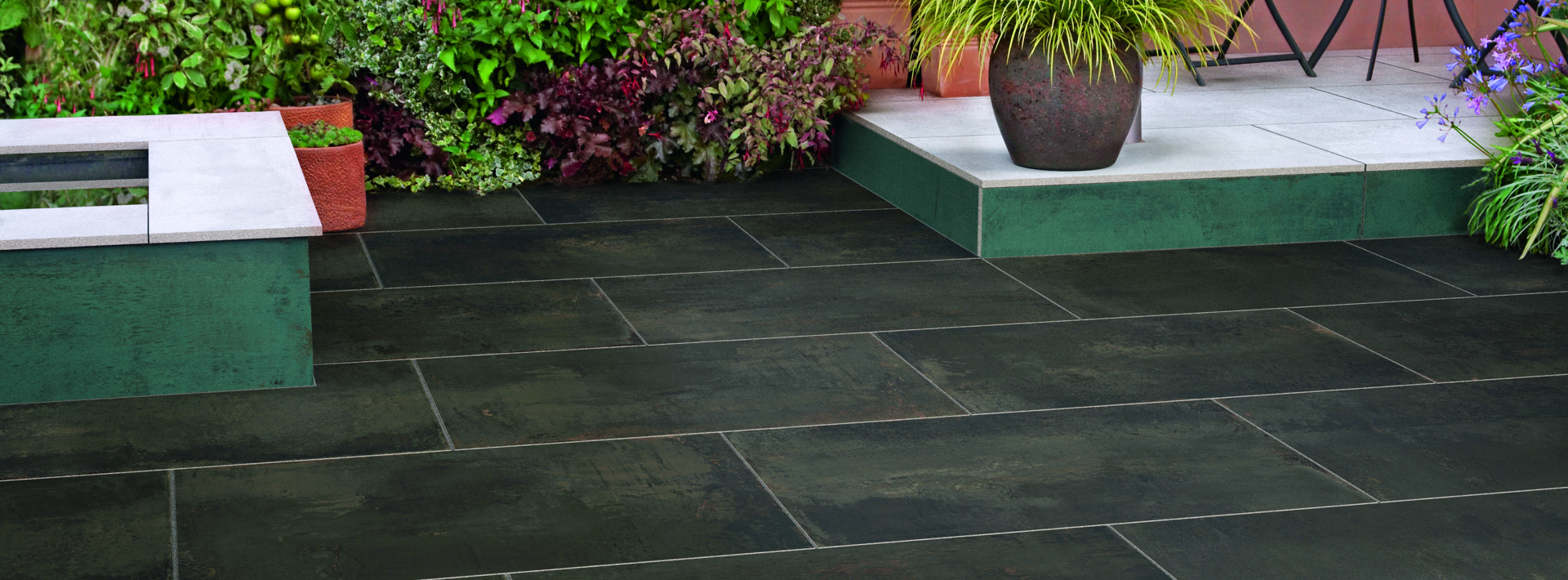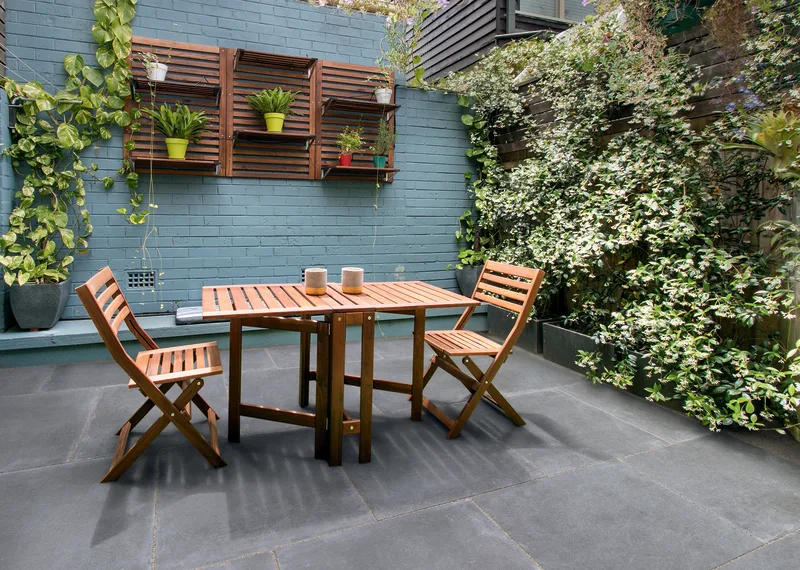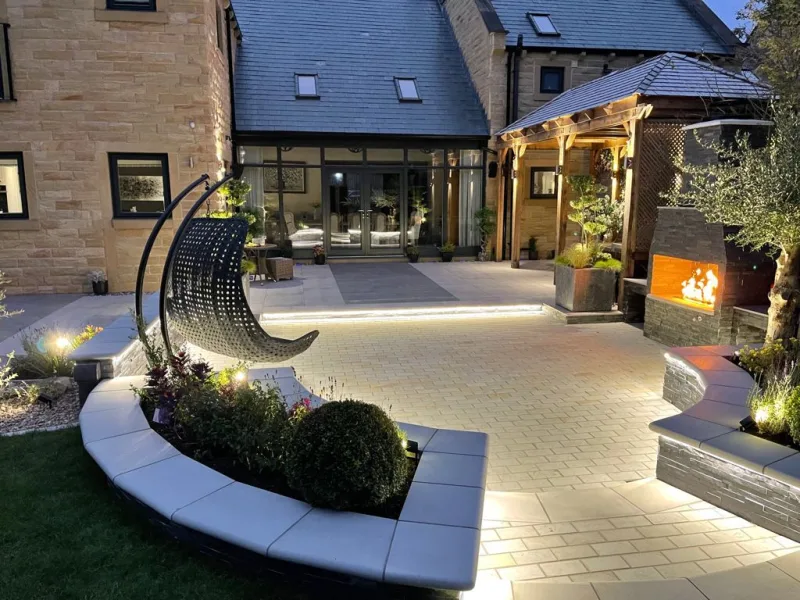Blog
Having a small garden doesn't mean that you have to limit your big ideas. Small gardens have more potential than we realise, and there are numerous ways to maximise and define your small space.
Whether you want to build a vegetable garden or add outdoor furniture or lighting, these small garden ideas can help you start the planning process.
1. Create sharp garden borders using edging
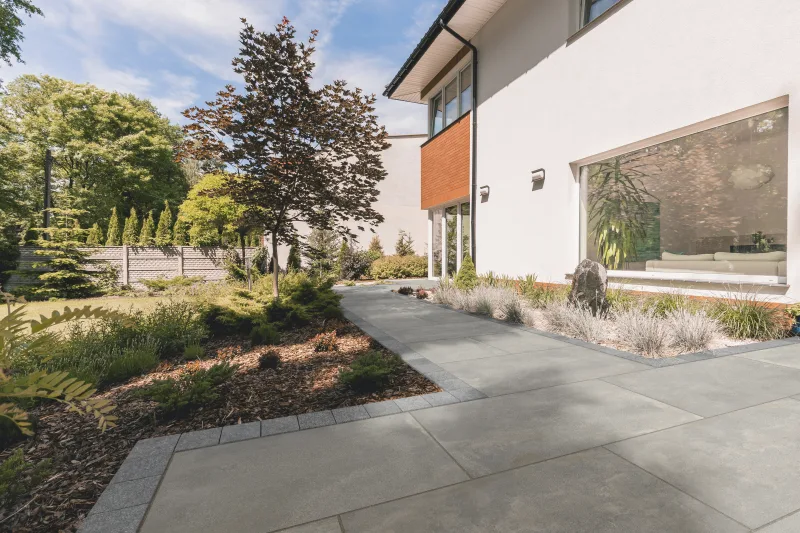
Edging a garden with appealing, well-trimmed flower beds and paths is similar to tailoring an article of clothing or framing a photograph. Edging also has a practical purpose: it keeps the dirt from spreading onto paved areas. The precise placement of edging stones and paving can also help guide water flow towards plants.
Some gardeners use edging to draw attention to certain plants or focal points, while others use them only for the appealing style they provide to the overall small garden design. Not only do defined edges in a small garden give the impression of a larger outdoor space, but they also bring an attractive element to the garden.
If your garden has a tiny patio area and grass, this is the ideal chance to introduce some order and hierarchy into the space.
Begin by digging flowerbeds around the edges of your grass. This will allow you to add colourful flowers, which will serve as an additional ornamental feature for your garden.
Installing your choice of textured edging stones or pavers is the next step in establishing distinguishable borders between the grass and the plant bed. It will give your little outdoor area a unified look that will help you keep your grass under control.
2. Wooden plank paving for a rustic oasis
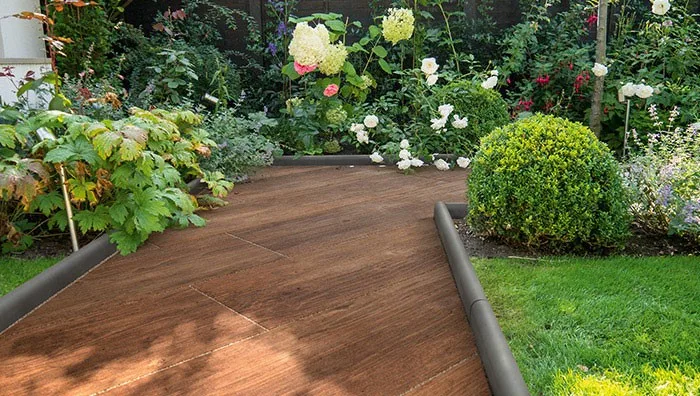
To get your small garden summer-ready, consider installing a faux decking area to create a rustic small courtyard garden for a fraction of the cost. Symphony Vitrified Plank Paving has an incredibly natural texture, and you can achieve the warmth of real wood with this porcelain tile.
Wood plank paving tiles are long-lasting and exceptionally durable, and are easy to maintain. Porcelain is a strong material that can survive the elements throughout the year, especially in high-traffic areas. Compared to wood decking, wood effect paving slabs are fade-resistant and do not warp. Because they absorb minimal water, they don’t attract as much algae or staining as wood.
Add plank paving for a modest alfresco dining area or to host small gatherings in your yard. It is also great for adding other aesthetic accents, such as potted plants or a vertical garden using climbing plants. Make your space look bigger by choosing a design that matches your interior flooring.
3. Vertical garden space
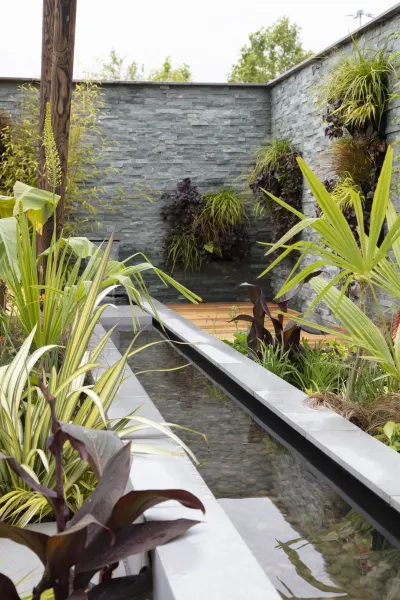
If you cannot extend your garden horizontally, consider expanding it vertically. Select vertical plants and other design features like a living wall. Increasing the height can make it seem more spacious by drawing people's attention upward.
You also make room in your outdoor living space for a small coffee table or garden furniture by using a few outdoor objects that are tall and narrow, such as vertical planters and umbrellas.
Make your small garden visually appealing by using elevated accents. You can use the edges of raised beds to create seating. Depending on your design preferences, a raised area may be made of stone, wood, or concrete.
4. Expand whitespace with lighter paving

A lack of natural light may be an issue in smaller gardens, but using lighter garden pavers and slabs may help counterbalance this and create the appearance that there's more room than there really is.
Generally, bigger, lighter tiles provide the sense of more space than smaller pavers, and a paler colour opens up your garden space by generating the impression of length and breadth. Similarly, a garden path that twists and snakes its way through your garden from one element to another may offer a feeling of spaciousness.
Although garden paths and slabs may need more maintenance in the winter because of their lighter colour, it is worth having a colour scheme that opens and creates the illusion of open space in a tiny garden.
5. Add dimension to your garden with garden walling
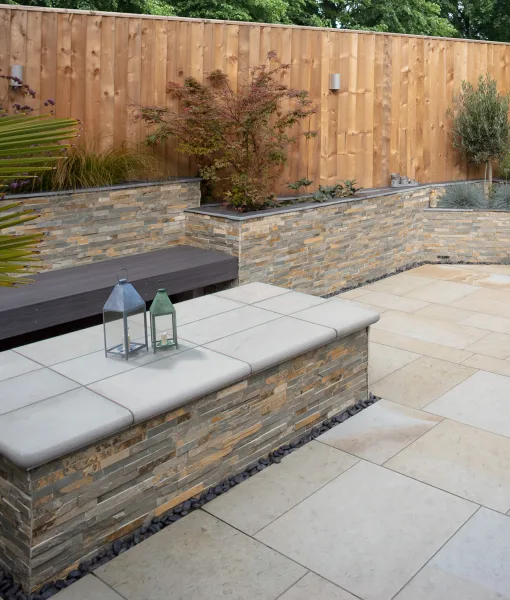
An attractive stone garden wall isn't just a simple border for your garden; it’s also a striking visual statement that may help a tiny garden with its lack of depth and texture.
Create raised beds with garden walling that blend in with the rest of your landscape. Fill the inside of the garden walling with soil and fertiliser, and you'll have a stunning raised planting bed made from natural stone or a replica using concrete. To create a traditional cottage garden, consider adding single-wall planters filled with a colourful assortment of Foxgloves, hardy Geraniums, green foliage and Delphiniums. You could think about adding some ornamental features to your space as well.
Not only does garden walling bring a decorative element to small spaces, but it is practical, too. It offers exceptional drainage, making it ideal for low-lying, wetter landscapes. Additionally, it's a suitable way to create attractive levelled gardens.
For something a little more unusual, you may try a wooden shelf unit, which can be attached to brick wall at any height. There are many ways to make your small garden space come to life with colour and texture!
6. Be bold with eye-catching decorations
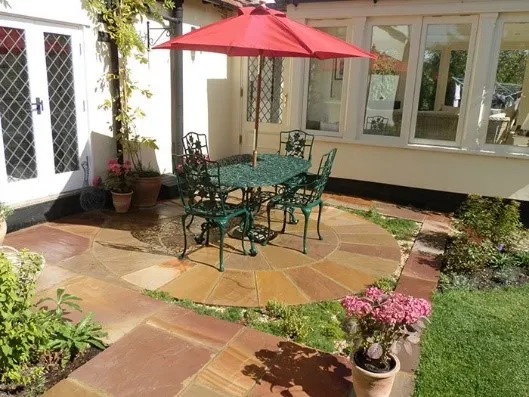
For those with limited outdoor space, there is no need to keep things modest. Massive potted plants, dramatic garden sculptures and decorations are eye-catching focal pieces in any yard or garden design. Smaller settings may benefit from huge, dramatic plants like Cannas and Philodendron.
Also, a small garden layout will benefit from colourful outdoor furniture. Garden furniture, such as benches, seats, stools and patio tables, can add colour and interest to your garden and provide a place to relax and unwind in the warmer months.
7. Use natural stone paving
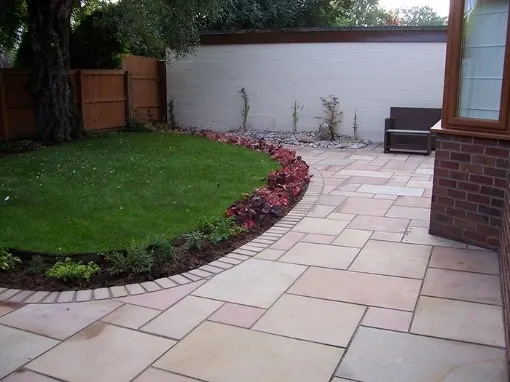
There are no hard and fast rules for creating the outdoor space of your dreams. In addition to grass, try natural stone paving for high-traffic areas and use it as a base for garden features such as BBQs and outdoor seating. If you're working with a limited amount of floor space, consider granite, slate, limestone, or Indian sandstone.
Natural stone is a timeless classic. Try some pattern play to give interest and character to your small gardens.
You don't have to be an artist to create a unique design, whether it's a primary 45-degree angle or a more complex geometric pattern. Indian Sandstone Circles are very popular in garden design, too.
8. Mix paving with greenery
It’s important to take a greener approach to garden design by incorporating foliage into your hard landscaping. Adding colour and texture helps attract insects and animals and provides a plot with a more natural appearance.
Including lush foliage like Irish Moss and Elfin thyme in your paved area's design is possible. But before you rush to purchase creeping perennials to cover those gaps, you need to consider where you want to place them. Not all plants can tolerate heavy foot activity.
Generally speaking, the less traffic-resistant leaves are those with a fragile structure. Plants like Dwarf Mondo Grass can withstand more than creeping thyme because of their smaller size. It depends on how often you plan to walk on your stone, paver pathway, or patio.
Another consideration is how well-drained the site is and how long it remains wet or saturated after rainfall. It is possible to find creeping plants that can thrive in any soil moisture. Several creeping perennials, including Blue Star Creeper and Mazus, may survive in moist or damp soil.
9. An outdoor mirror can expand a tiny garden

This piece of advice is not only helpful but also easy to implement and perfect for those who are attempting to save money. Installing mirrors in your outdoor area will immediately provide the illusion that the space is more extensive.
Consider mounting a long row of mirrors on the wall or fence at the very end of your garden. The length of your space will seem "doubled" due to this optical illusion.
Choose an enormous antique mirror instead if you want your garden to resemble an English country garden and allow seasonal flowers and climbers to grow around the mirror. It will become a part of the garden while simultaneously giving the impression that there is more room.
10. Divide your small space into zones
Try subdividing the outdoor space into several zones or "rooms" rather than using it as one cohesive environment. Even a little hedge may be used to divide the grass from the front half of your small garden. Using walls to create zones in your garden will add interest to the area while also giving the impression that there is more room.
You can create zoning in the garden through colour and thoughtful planting. Spaces may be visually broken up by flower gardens, box hedging and wildflowers. Building walls and walkways to physically separate distinct areas and using different flooring materials is worth considering.
Play with height to visually divide your garden by including layers of plants and sunken sections, or a pergola, into the design.
Deciding on the functions of your garden's established zones will help you with the zoning. For example, your patio could be used for sunbathing, while a pergola provides shade for a bistro dining table and plant pots.
11. Play with the lighting in your garden
A small outdoor space can be significantly improved by good outdoor lighting, which is an aspect that is often an afterthought. When positioned and used appropriately, lighting may provide the illusion of depth, emphasise architectural details, and even contribute to an increased feeling of safety when it is darker outside.
You may give the impression that your garden has more room than it does by positioning your outdoor lighting in a particular manner. Why not try layered lighting? Layered lighting is very captivating, creating a sense of rhythm within the lighting, capturing the viewer as their gaze flows over the beautiful landscape.
To do this, you should attempt "up-lighting" the rows of plants and shrubs so that the light is directed towards the farthest away elements. If a tree is situated in the background, control the light from a spotlight in its direction. You may also install strip lights around the perimeter of your space to give it a more in-depth appearance.
12. Vertical vegetable gardening
If your small space doesn’t allow for raised beds to grow a vegetable patch, vertical gardening is a fantastic option. Instead of a formal garden, consider installing a vertical garden on your patio to make the most of your outdoor area.
Vegetables grown vertically on structural components should be considered if you want to grow more than one kind. Pole beans, for example, take up less room than bush beans. Despite their aggressive nature, vining cucumbers and squash take up less space than other vegetables.
Consider selecting plants that can climb to maximise the area in a little garden that you have available. You may cover walls or pergolas with cable and wire, or you can train vines to climb these structures and use them to create edible screens or edging. Installing a lattice over your walls or fences will allow you to develop step-over edging. Pots can be fastened to the walls as an alternative to or in addition to using a prefabricated commercial living wall system.
Even in a small yard with decking, it is possible to have a vertical vegetable garden if you use tiered outdoor plant stands that are created using old ladders, stacked planters, wood palettes, or metal support structures. These tiered plant stands also be used to experiment with ideas about tiny food gardens.
13. Break up a narrow garden

Narrow gardens shouldn't be a hindrance to your plans. If you want to incorporate an outdoor bar or a corner couch, look for a style that fits snugly into the far end of your yard. Additionally, it will serve as a great place to entertain visitors because it can break the entire length of your garden.
If you're considering paving, use a streamlined, pale design to emphasise the sensation of spaciousness. A single symmetrical section of stone isn't necessary either. Use offset paving portions instead of straight lines to create distinct "zones" that draw the eye up and around the plot instead of straight down. Then, surround your area with a riot of colour and leaves by planting many plants.
FAQs
How can I prevent my neighbours from seeing my back garden?
While fencing and stone walls may do the work, adding a divider, screen, or plant barrier can permanently obscure your neighbour's view from the second level of your home. Using freestanding screens, wood slat barriers and partially enclosed pergolas may help you create your own private haven.
Which colour fence makes a garden seem larger?
During the summer, your beautifully painted fence will stand out even more when the sun is out and shining bright. The best fence colours for making a garden stand out are black, dark brown, and dark grey.
Which plants work best for a green wall?
Parsley, Mint, Thyme, and Chives are among the plants that thrive in shaded areas. Ferns are an excellent alternative for year-round growth because of their hardiness and adaptability. Cold winters and hot summers are not a problem since they are all hardy plants.
Conclusion
Even if you have a few square feet of garden area, there's no reason why you can’t use the space all year round. You can use so many small garden ideas to maximise your spaces, and there are even budget small garden ideas to help you get started, too!
This article will have given you a fantastic head start - but don’t let us stop you from experimenting further. Let your creativity run wild and optimise whatever space you have.
If you’re ever feeling stuck, head back to Marshalls for some wonderful design ideas and a fantastic array of products that are sure to enhance any outdoor space.








